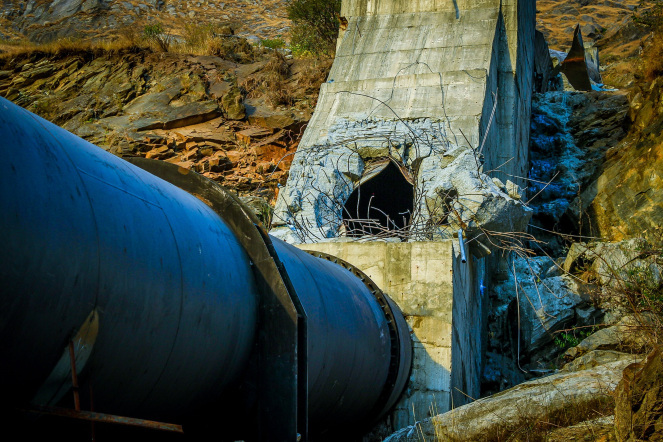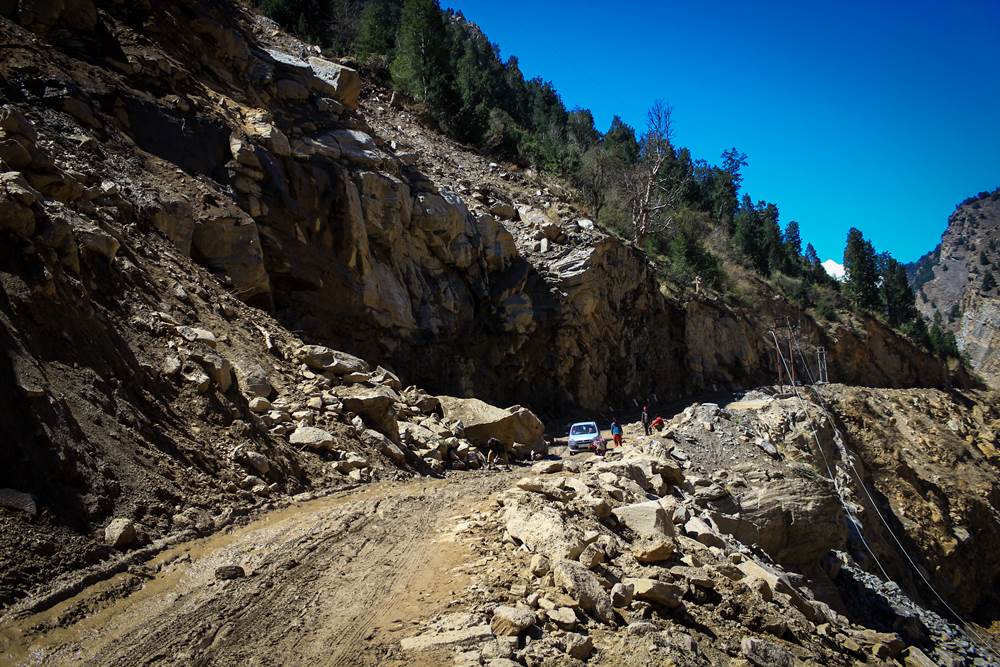This Lok Sabha elections both major national parties, the BJP and Congress in their manifestos speak of “Protecting the Himalayas”. However both parties and their candidates remain silent on a grave issue of concern in region: disasters induced by development, especially unregulated hydro-power development in the disaster prone states like Himachal Pradesh. Prompted by the recent reports of huge cracks in the tunnel of 100MW Sainj Power Project (3 May, 2019) and leakages in the 520 MW Parbati Stage III HPP (14 April, 2019), community representatives and environmentalists from Himachal have sent detailed submissions to the heads of national and state level regulatory bodies on 8 May, 2019 highlighting the issue of safety negligence in planning, construction and operation of hydropower projects.
Apprising the Central Water Commission (CWC), Ministry of Environment Forest and Climate Change (MoEFCC), National Disaster Management Authority (NDMA), State Disaster Management Authority (SDMA), and the Dam Safety Cell, Himachal Pradesh, the memorandum raised issues of lack of an accountability mechanism, public grievance redressal and punitive action with regard to dam safety. “In the absence of this, Himachal has recorded more than 15 cases of negligence since 2012, which has adversely impacted houses, property, local ecology and the lives of local population”, the submission states.

The memorandum brings to attention severe negligence in post construction operations and absence of a functional state-level dam safety authority. Illustrating a case from last monsoon in Kinnaur District where water from Kashang HPP was released without warning causing a colossal damage to forests of over Rs 17 Crores, the memorandum states how the Deputy Commisioner wrote a toothless letter merely requesting to the General Manager of HPPCL, the project proponent, ‘to look into the matter and take further appropriate necessary action in the matter, please.’ “RTI information we have received also revealed that state-level Dam Safety Cell under the Directorate of Energy has never held a second meeting on its own since its inception in 2014, and failed to take any independent action to investigate incidences of negligence like Kashang” stated Vaishnavi Rathore of Himdhara Environment Research and Action Collective, one of the signatories to the memorandum. “In such a scenario, it is the people in the project areas who have to bear the costs of safety failures and negligence without access to any form of grievance redressal body”, she added.
Quoting the CAG report of 2017 on safety compliance in select hydropower projects, the memorandum also submitted that there is an absence of dam safety cells within each independent project, as required by the Directorate of Energy’s notification of (DoE) 2014. The CAG in its report points out that only nine out of 18 required inspections were carried out and no risk assessment study or safety audits were carried out in Bhakra Nagal, Larji and Chamera-I projects that had been studied.

The memorandum also puts on record the lack of transparency of project proponents. “In April 2017 after leakages during testing in the 800 MW Parbati II project, when NHPC was approached for a detailed enquiry report of the incident, the company responded that it “can be provided only once the testing process is over and the unit is successfully commissioned””, said Manshi Asher of Himdhara Collective. Added Moti Ram, a resident of Rela, one of the affected villages in the area and secretary of Himachal Kisan Sabha, Banjar, “Its been 3 years since the incident and the project, which is running late by several years, has still not been commissioned due to repeated geological challenges”.
“The most critical issue that we have been raising for years is of lack of genuine environmental impact assessments while planning the projects, most of which are located ignoring landslide proneness, seismicity issues and over all disaster vulnerability of the sites”, said another signatory, R.S. Negi of Him Lok Jagriti Manch, Kinnaur. With reference to the Kashang HPP again, the memorandum quotes another CAG report which mentioned that “no survey was done prior to the construction of buildings at a cost of Rs 2.80 crore which were badly damaged due to landslides in June 2013”, a cost that could have been avoided if a survey was carried out earlier, showing that the losses borne are not just environmental, social and economic in nature but also financial. Revenues from the hydro sector have been steadily falling. In 2017-18, the revenue earned from the sector saw an all-time low, going down to Rs. 687 crores. “Instead of trying to protect the local economy and ecology, government policy is transferring the costs and risks of hydropower development to the common people” added Asher.
The memorandum demands for a white paper on all the dam related accidents that have taken place in the last couple of years, apart from an independent inquiry or audit of safety compliance of all under construction and operational projects. Key demands also include activation of the independent Dam Safety Cell at the state level and within each project without which no project should be allowed to be commissioned or operated, creation of a grievance redressal mechanism for addressing issues by public, and carrying out an independent scientific study with regard to hydropower projects and their vulnerability to disasters/accidents.


